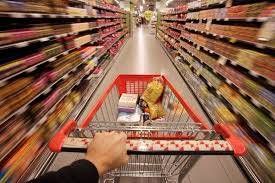ISLAMABAD - Inflation rate has reduced to single digit 8.5 percent in April mainly due to slowdown in economic activities amid coronavirus and reduction in oil prices.
This was third consecutive month when inflation has reduced after it had touched 12 years highest level of 14.56 percent in January this year. Later, it had decreased to 12.4 percent in February and 10.24 percent in March and now to 8.5 percent in April.
Federal Minister for Planning, Development and Special Initiatives Asad Umar said this was the third successive month inflation had declined. “Consumer price inflation fell to 8.5pc in April. It’s the 3rd successive month of sharp decline in inflation, with CPI dropping by more than 6pc in last 3 months,” he said on Twitter. He hoped that with the sharp reduction in petroleum prices for the month of May, inflation will be still lower.
The government had reduced the petroleum products prices up to Rs30 per litre for the month of March, which had helped in slowing down the inflation rate. The government had reduced the petrol price by Rs15 per litre, high speed diesel petrol by Rs27.15 per litre, kerosene oil by Rs30.01 per litre and light diesel oil price by Rs15 per litre. The reduction in oil prices would help in reducing the inflation rate.
According to the latest PBS data, inflation has recorded at 11.22 percent in ten months (July to April) of the current fiscal year. The government had estimated inflation in range of 11 percent and 13 percent for the current fiscal year. The SBP’s projection for average inflation remained at 11 – 12 percent for FY20. Meanwhile, the Sensitive Price Indicator (SPI), which gauges rates of kitchen items on weekly basis, increased by 14.25 percent. Similarly, the wholesale price index (WPI) based inflation enhanced by 12.16 percent in the period under review.
The International Monetary Fund (IMF) foresees inflation will be 11.3 percent in current fiscal year FY 2020 and it would be reduced to 8.0 percent in FY2021. World Bank’s estimated inflation is 11.8 percent and 9.5 percent for FY 2020 and FY 2021 respectively. According to ADB, Pakistan will struggle with double-digit inflation (11.5 percent) in FY 2020 fuelled by escalating food prices, scheduled hikes to utility rates, and domestic currency depreciation and it would decline to 8.3 percent in FY 2021.
The break-up of inflation of 8.53 percent in April 2020 showed that food and non-alcoholic beverages prices increased by 11.69 percent. Similarly, health and education charges went up by 10.49 percent and 3.23 percent, respectively. Similarly, prices of utilities (housing, water, electricity, gas and fuel) increased by 5.13 percent in last the month. Meanwhile, the prices of alcoholic beverages and tobacco went up by around 19.55 percent. Price of clothing and footwear increased by 10.2 percent and furnishing and household equipment maintenance charges 9 percent. Recreational charges and those related to culture went up by 5.05 percent in the period under review, while amounts charged by restaurants and hotels by 8.45 percent in April 2019 as compared to the same month last year.
The PBS has also changed the weights assigned to various consumption items in the goods basket, and introduced a new panel of prices to be obtained from urban and rural areas. As per data, the urban CPI covers 35 cities and 356 consumer items while rural tracks 27 rural centres and 244 items.
In urban areas, the food items which saw their price increased during March 2020 included: pulse masoor (27.54 percent), pulse moong (23.11 percent), fresh fruits (17.71 percent), eggs (14.71 percent), pulse mash (13.98 percent), pulse gram (10.83 percent), besan(8.03 percent), beans (4.72 percent), gram whole (4.38 percent) and sugar (2.55 percent). On the other hand, items that declined in urban were onions (22.94 percent), chicken (21.81 percent), tomatoes (11.1 percent), milk fresh (4.29 percent), fresh vegetables (3.86 percent), wheat (3.29 percent) and vegetable ghee (1.01 percent).
In rural areas, the food commodities which prices enhanced included fresh fruits (23.26 percent), pulse Moong (18.25 percent), pulse Masoor (15.66 percent), eggs (11.21 percent), pulse mash (6.94 percent), pulse gram (6.77 percent), beans (5.8 percent), Besan (2.8 percent) and sugar (1.99 percent). Meanwhile, prices of following items decreased included onions (25.01 percent), chicken (19.84 percent), fresh vegetables (11.19 percent), potatoes (6.57 percent), tomatoes (5.72 percent), Milk fresh (4.72 percent) and Wheat (4.43 percent).






